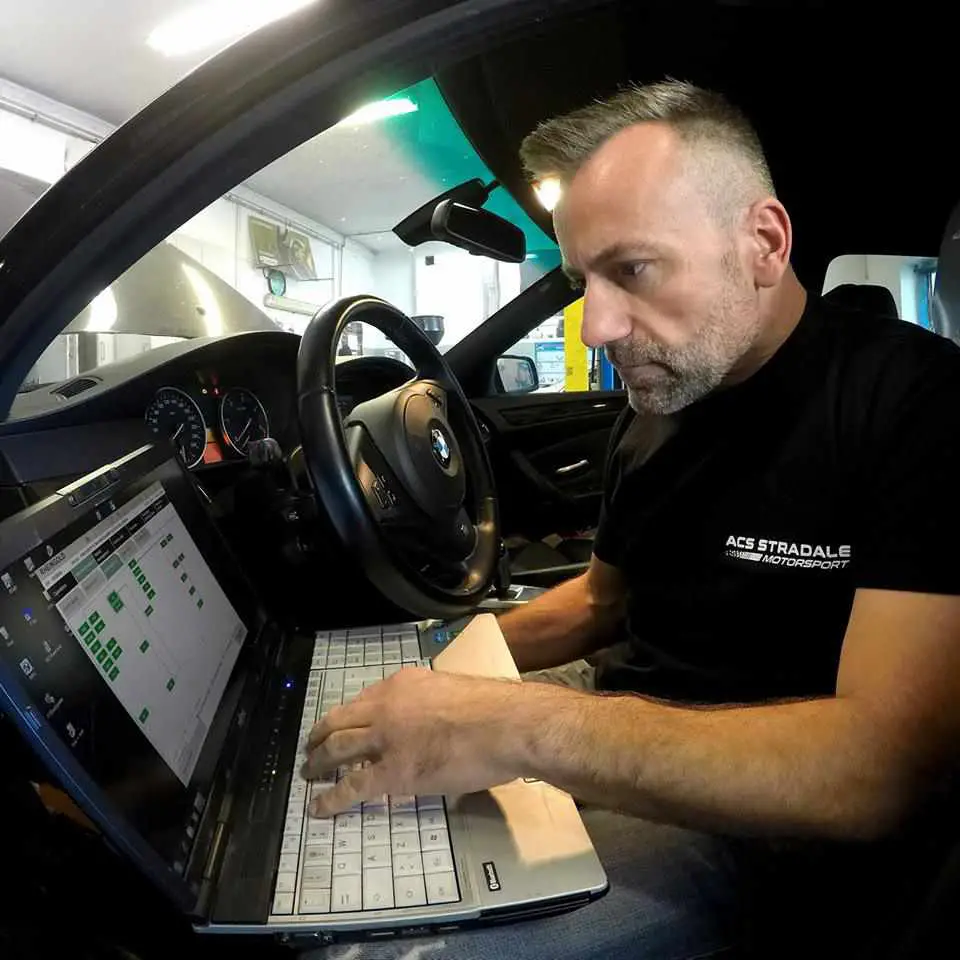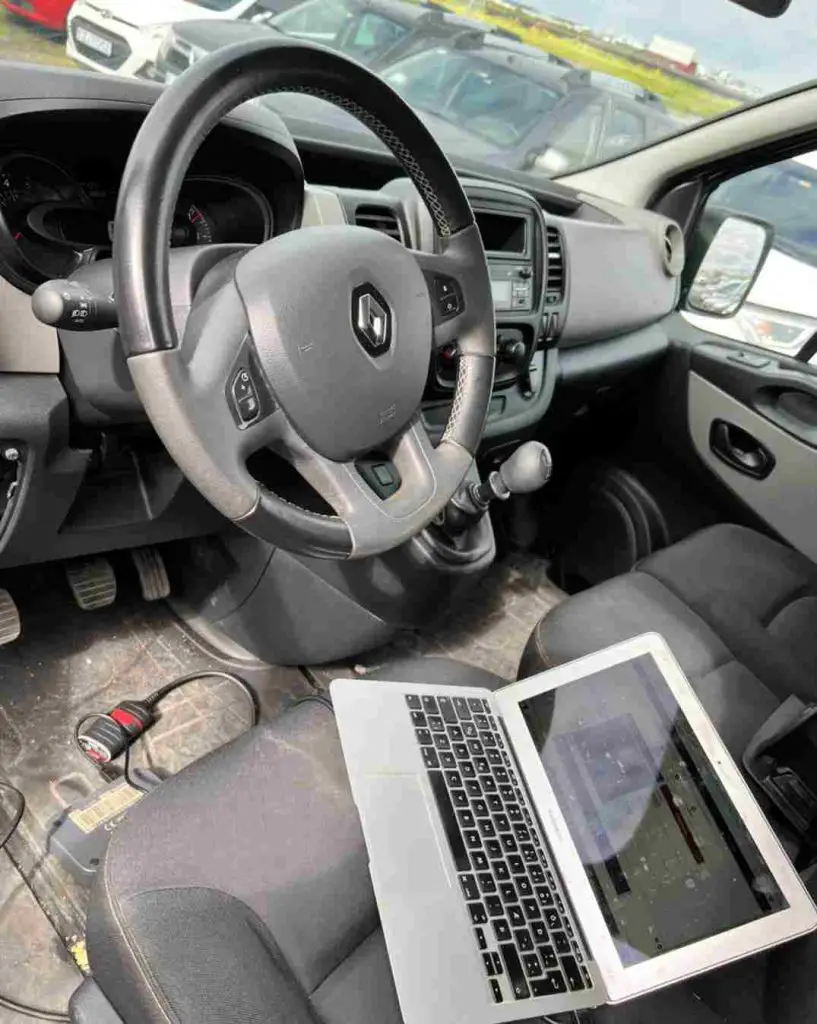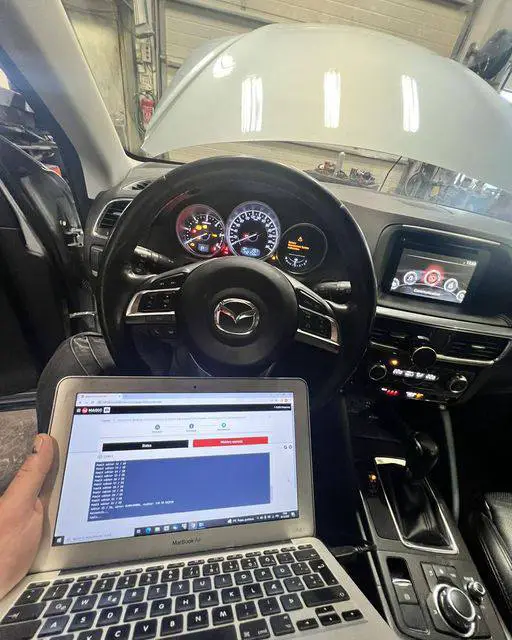Car tuning is the process of modifying a vehicle’s performance and characteristics to improve its handling, acceleration, and overall driving experience.

While some people choose to tune their cars manually, using a laptop to tune a car can be more precise and cost-effective.
In this article, we will go over the steps involved in tuning a car with a laptop, including the equipment needed, setting up the laptop and software, and gathering and analyzing data.

Equipment Needed for Car Tuning with a Laptop
Before you can start tuning your car with a laptop, you will need a few key pieces of equipment:
Laptop:
You will need a laptop with a fast processor and sufficient memory to run the car tuning software.
OBD-II adapter or cable:
To communicate with your car’s electronic control unit (ECU), you will need an OBD-II (On-Board Diagnostics II) adapter or cable. These can be purchased online or at an auto parts store.
Car tuning software:
There are several software options available for car tuning, including HP Tuners, Cobb Tuning, and more. Choose a software that is compatible with your car’s make and model and has the features you need.
Setting Up the Laptop and Software
Once you have all the necessary equipment, you can start setting up your laptop and software:
- Install the car tuning software on your laptop according to the manufacturer’s instructions.
- Connect the OBD-II adapter or cable to your laptop and car. The adapter or cable should fit into the OBD-II port, which is usually located under the dashboard on the driver’s side.
- Follow the software’s instructions to set it up and configure it to communicate with your car’s ECU. This may involve entering your car’s make, model, and other information.

Gathering Data and Analyzing the Car’s Performance
With the laptop and software set up and connected to your car’s ECU, you can start gathering data and analyzing the car’s performance:
- Use the software to scan and read the car’s diagnostic data. This will give you an idea of how the car is currently performing and any issues that may need to be addressed.
- Identify any areas for improvement in the car’s performance. This could include things like slow acceleration, poor fuel efficiency, or high emissions.
- Use the software to create and test different tuning configurations. This may involve adjusting the car’s fuel-to-air ratio, ignition timing, or other parameters.
- Compare the results of each configuration to see which one gives the best improvement in the car’s performance. You may need to fine-tune the configurations further to get the best results.
Implementing the Tuned Configuration
Once you have found the best tuned configuration for your car, it’s time to implement it:
- Upload the tuned configuration to the car’s ECU. The software should have instructions on how to do this.
- Test the car’s performance with the tuned configuration. Take it for a drive and see how it handles, accelerates, and performs overall.
- Fine-tune the configuration as needed. If you are not satisfied with the car’s performance, you may need to make additional adjustments to the configuration. Repeat the testing process until you are satisfied with the results.
Conclusion
Tuning a car with a laptop can be a precise and cost-effective way to improve a vehicle’s performance. By following the steps outlined in this article, you can set up a laptop and software, gather data and analyze the car’s performance, and implement a tuned configuration.
However, it is important to follow the proper steps and not overload the car’s ECU with too much power, as this could damage the vehicle.
With the right tools and knowledge, car tuning with a laptop can be a rewarding and enjoyable hobby.

What are the risks associated with tuning a car with a laptop?
Some risks associated with tuning a car with a laptop include accidentally damaging the car’s ECU, voiding the car’s warranty, and creating unsafe driving conditions.
To minimize these risks, it is important to use quality equipment, follow the proper steps, and only make changes within the safe limits of the car’s capabilities.
Can all cars be tuned with a laptop?
Not all cars can be tuned with a laptop. Some older cars may not have an OBD-II port, and some newer cars may have a more advanced system that requires different equipment.
Additionally, the software should be compatible with the make and model of your car.
It’s important to do some research and check compatibility before attempting to tune your car with a laptop.
Can a laptop with average specs run the car tuning software?
While it’s possible to run car tuning software on a laptop with average specs, it’s recommended to have a laptop with a fast processor and sufficient memory to ensure the software runs smoothly and can handle the data it will be processing.
Is it illegal to tune a car with a laptop?
The laws regarding car tuning can vary by state or country.
In some cases, certain modifications or tune configurations may be considered illegal. It’s important to check with local authorities or consult with a professional before tuning a car with a laptop to ensure that you are following the laws and regulations.
Can I fine-tune my car’s configuration by myself or do I need professional assistance?
While it is possible for an enthusiast to fine-tune their car’s configuration by themselves, it can be complicated and require a good understanding of the car’s internal systems and the software being used.
Therefore, it is highly recommended to get professional assistance from a qualified mechanic or tuning specialist to ensure that the car’s configuration is fine-tuned properly and safely.
This can also ensure that you don’t void any warranty.
